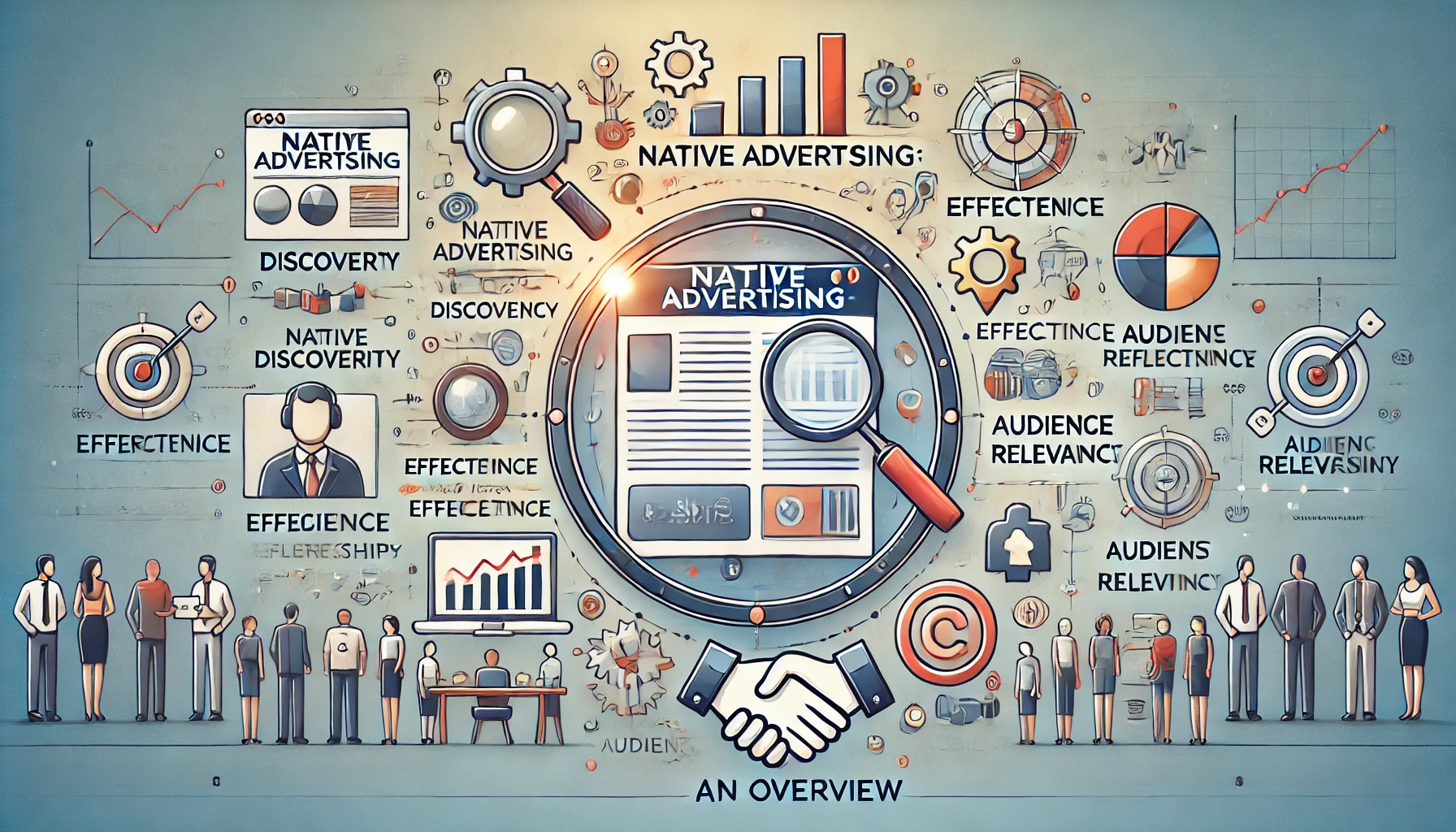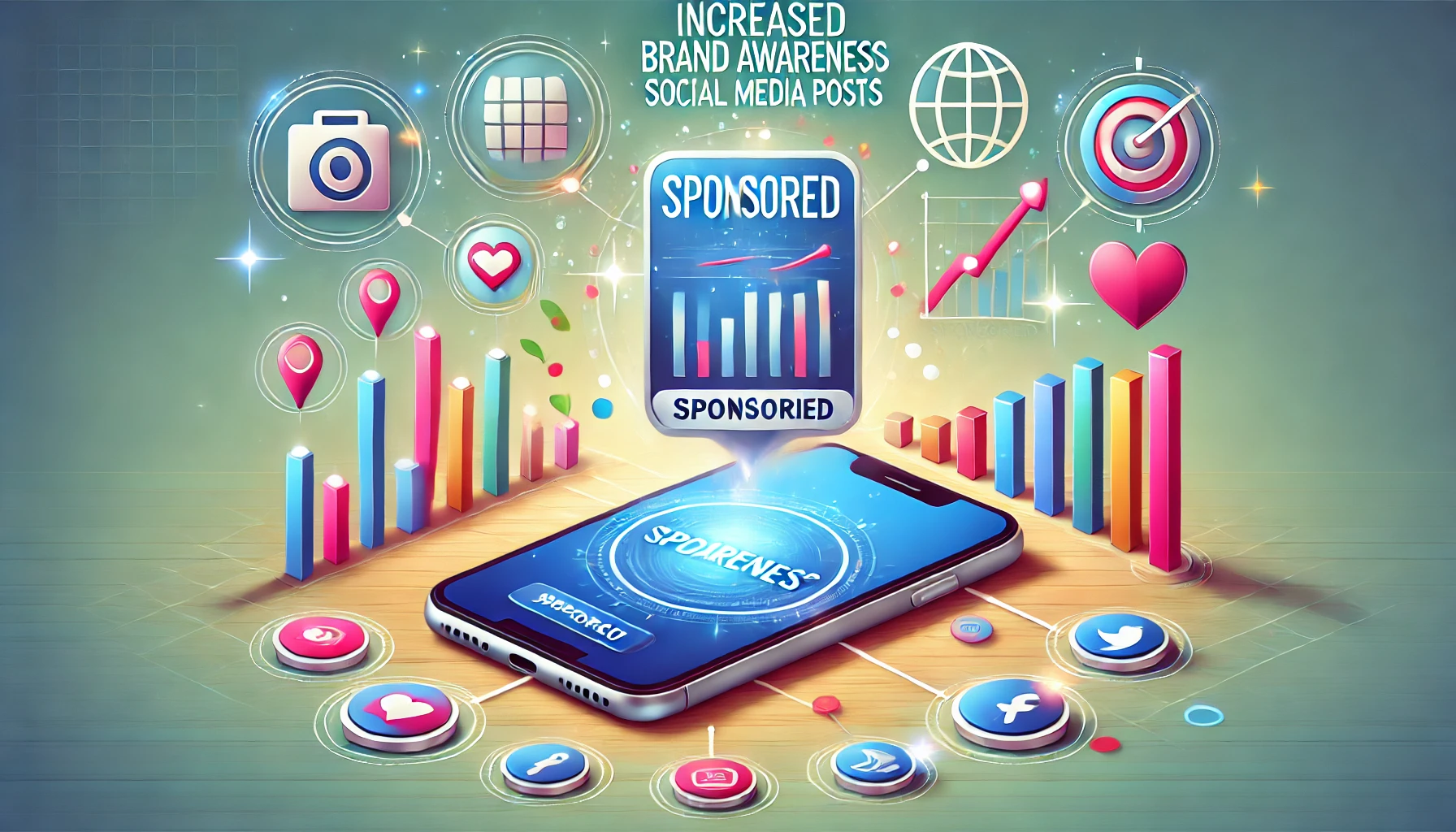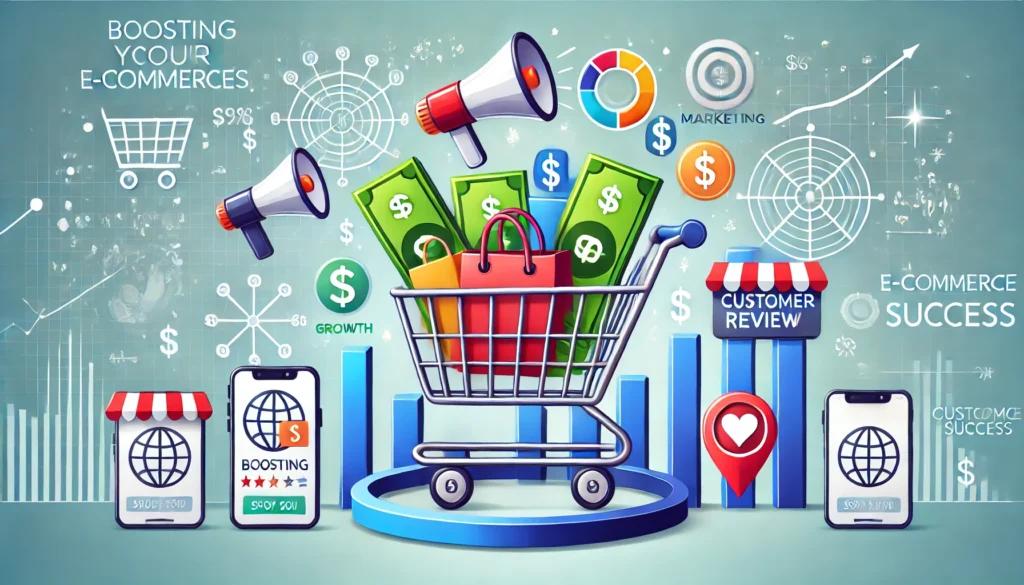Sponsored content refers to a type of advertising that blends seamlessly with the surrounding editorial or user-generated content on a platform. Unlike traditional advertisements that stand out as separate and promotional, sponsored content is designed to match the format, style, and voice of the medium in which it appears. This content is often created in collaboration with a publisher, influencer, or media outlet, and it aims to provide value to the audience while subtly promoting a brand, product, or service.
Table of Contents
ToggleKey Characteristics of Sponsored Content:
- Native Integration: Sponsored content is integrated into the platform’s regular content flow, making it less intrusive and more engaging for the audience.
- Value-Driven: It offers useful, entertaining, or informative content that resonates with the audience, thereby enhancing its appeal and effectiveness.
- Transparency: Ethical sponsored content practices include clear disclosure of the sponsorship to maintain transparency and trust with the audience.
- Collaboration: Often involves collaboration between the brand and content creators or publishers to ensure the content aligns with both the brand’s goals and the platform’s audience expectations.
Examples of Sponsored Content:
- Articles and Blog Posts: Written pieces that provide information or insights related to a brand’s offerings, subtly integrating promotional elements.
- Social Media Posts: Content created by influencers or the brand itself, designed to engage followers while promoting a product or service.
- Videos and Webinars: Multimedia content that educates or entertains the audience, incorporating brand messaging in a way that feels natural and relevant
Importance of Sponsored Content in Digital Marketing
![]()
1. Enhanced Brand Visibility
Sponsored content helps brands reach a wider audience by leveraging the existing followers and readers of the content platform. This increased visibility is crucial for brand awareness and recognition.
2. Improved Credibility and Trust
When sponsored content is published on reputable platforms or by trusted influencers, it lends credibility to the brand. Audiences are more likely to trust recommendations and information from sources they already follow and respect.
3. Better Audience Targeting
Sponsored content allows for precise targeting, as brands can choose platforms and influencers that align with their desired demographics. This ensures the content reaches a relevant and engaged audience.
4. Seamless Integration
Unlike traditional ads, sponsored content blends naturally with editorial content, making it less disruptive and more appealing to consumers. This seamless integration enhances user experience and reduces ad fatigue.
5. Higher Engagement Rates
Content that provides value and resonates with the audience tends to generate higher engagement. Sponsored content that is informative, entertaining, or educational can attract more likes, shares, and comments.
6. Cost-Effective Marketing Strategy
Sponsored content can be more cost-effective compared to traditional advertising methods. It often delivers better ROI due to its targeted nature and the organic engagement it generates.
7. Enhanced SEO and Organic Reach
High-quality sponsored content can boost a brand’s SEO efforts. When published on reputable sites, it can drive traffic back to the brand’s website, improve search engine rankings, and enhance overall online presence.
8. Insights and Analytics
Brands can gain valuable insights into consumer behaviour and preferences through the performance data of sponsored content. Future content creation and marketing tactics can benefit from this data.
9. Building Long-Term Relationships
Sponsored content fosters long-term relationships between brands and content creators or influencers. These partnerships can lead to ongoing collaborations and a consistent brand presence across multiple platforms.
10. Adaptability and Flexibility
Sponsored content can be adapted to various formats and platforms, from blog posts and articles to social media updates and videos. This flexibility allows brands to tailor their message to different audiences and marketing channels.
Native Advertising: An Overview

1. Definition of Native Advertising
Native advertising is a type of sponsored content in which the advertisement blends in seamlessly with the user experience it is placed within. Unlike traditional banner ads or pop-ups, native ads are designed to blend seamlessly into the content around them, making them less intrusive and more engaging for users.
2. Types of Native Advertising
- In-Feed Ads: These appear in the natural feed of a website or social media platform, such as sponsored posts on Facebook or promoted tweets on Twitter.
- Search Ads: These are ads that appear alongside search engine results and mimic the look and feel of organic search results.
- Recommendation Widgets: Found at the bottom or side of a webpage, these suggest additional content for users to read, often marked as “sponsored” or “promoted.”
- Promoted Listings: Typically found on e-commerce sites, these ads promote products within the site’s native product listings.
- Custom Content: Sponsored articles or videos created to match the editorial style and tone of the hosting platform.
3. Benefits of Native Advertising
- Increased Engagement: Native ads tend to generate higher engagement rates as they blend in with the organic content, making them more appealing and less disruptive.
- Enhanced User Experience: By matching the look and feel of the surrounding content, native ads provide a more seamless and enjoyable experience for users.
- Better Ad Performance: Native ads often result in better click-through rates (CTR) and conversions compared to traditional display ads.
- Greater Trust and Credibility: When done correctly, native ads can build trust and credibility with the audience, as they are perceived as more relevant and less intrusive.
- Improved Brand Awareness: By reaching audiences more naturally and engagingly, native ads can enhance brand awareness and recognition.
4. Challenges and Considerations
- Disclosure and Transparency: It is crucial to disclose native ads as sponsored content to maintain transparency and trust with the audience. Failure to do so can lead to ethical concerns and damage to the brand’s reputation.
- Balancing Promotion and Value: Native ads must strike a balance between promoting the brand and providing value to the audience. Overly promotional content can deter engagement and diminish the ad’s effectiveness.
- Consistency with Editorial Standards: Ensuring that native ads meet the editorial standards and quality of the hosting platform is essential for maintaining credibility and user engagement.
- Measuring Effectiveness: Tracking the performance of native ads can be complex, requiring sophisticated analytics tools to measure engagement, conversions, and ROI accurately.
5. Best Practices for Native Advertising
- Know Your Audience: Understand the preferences and behaviours of your target audience to create content that resonates with them.
- Focus on Quality: Invest in high-quality content that provides real value to the audience, whether it’s informative, entertaining, or educational.
- Ensure Clear Disclosure: Always disclose native ads as sponsored content to maintain transparency and trust.
- Collaborate with Trusted Platforms: Partner with reputable publishers and influencers to enhance the credibility and reach of your native ads.
- Optimize for Mobile: Ensure that native ads are optimized for mobile devices, as a significant portion of users access content via smartphones and tablets.
- Track and Analyze Performance: Use advanced analytics tools to monitor the performance of your native ads and make data-driven adjustments to improve their effectiveness.
Branded Content: An Overview
![]()
1. Definition of Branded Content
Branded content refers to the creation of content that is directly linked to a brand, allowing it to connect with its target audience in a meaningful and engaging way. Unlike traditional advertisements, branded content focuses on storytelling and providing value, rather than just promoting a product or service.
2. Characteristics of Branded Content
- Story-Driven: Emphasizes storytelling to engage and resonate with the audience.
- Value-Oriented: Provides useful, entertaining, or educational content.
- Subtle Branding: Integrates the brand in a non-intrusive way, focusing on the story or message rather than direct promotion.
- Emotional Connection: Aims to create an emotional bond with the audience, fostering loyalty and trust.
3. Types of Branded Content
- Videos and Web Series: Short films, documentaries, or episodic content that tell a story related to the brand’s values or mission.
- Articles and Blog Posts: Written content that provides insights, tips, or stories aligned with the brand’s expertise.
- Social Media Campaigns: Interactive posts, stories, or challenges that engage users and encourage participation.
- Podcasts: Audio content that delves into topics relevant to the brand’s industry or the interests of the target audience.
- Events and Experiences: Live or virtual events that provide immersive experiences, such as workshops, webinars, or product demonstrations.
4. Benefits of Branded Content
- Enhanced Brand Awareness: By creating memorable and engaging content, brands can increase their visibility and recognition.
- Deeper Audience Engagement: Branded content encourages active engagement, leading to higher levels of interaction and connection with the audience.
- Increased Credibility and Trust: Providing valuable and authentic content helps build trust and credibility with the audience.
- Stronger Emotional Connection: Through storytelling and value-driven content, brands can forge stronger emotional connections with their audience.
- Improved Brand Loyalty: Engaging and valuable content can foster brand loyalty and encourage repeat engagement from the audience.
5. Challenges and Considerations
- Creating High-Quality Content: Producing engaging and valuable content requires creativity, time, and resources.
- Maintaining Authenticity: It’s essential to keep the content authentic and aligned with the brand’s values to avoid appearing disingenuous.
- Measuring Effectiveness: Tracking the performance and ROI of branded content can be challenging, requiring comprehensive analytics and evaluation.
- Balancing Promotion and Value: Ensuring that the content provides value without being overly promotional is crucial for maintaining audience trust and engagement.
6. Best Practices for Branded Content
- Recognize Your Audience: Learn everything you can about the hobbies, inclinations, and lifestyles of the people who will be reading your material.
- Focus on Storytelling: Create compelling stories that resonate with your audience and reflect your brand’s values and mission.
- Provide Value: Ensure that the content offers real value, whether it’s educational, entertaining, or inspirational.
- Be Authentic: Maintain authenticity in your content to build trust and credibility with your audience.
- Collaborate with Influencers: Partner with influencers or industry experts who align with your brand and can help amplify your message.
- Leverage Multiple Platforms: Distribute your content across various platforms to reach a broader audience and increase engagement.
- Track and Analyze Performance: Use analytics tools to measure the effectiveness of your branded content and make data-driven adjustments to improve results.
Sponsored Social Media Posts: An Overview
1. Definition of Sponsored Social Media Posts
Sponsored social media posts are paid advertisements on social media platforms that promote a brand’s product, service, or content. These posts are designed to appear organically within a user’s feed, blending seamlessly with regular content to engage the audience more effectively.
2. Characteristics of Sponsored Social Media Posts
- Native Integration: Sponsored posts are crafted to match the look and feel of organic posts, making them less intrusive and more engaging.
- Targeted Reach: These posts can be precisely targeted based on demographics, interests, behaviours, and more, ensuring they reach the most relevant audience.
- Engagement-Oriented: Designed to encourage likes, shares, comments, and other forms of interaction from users.
3. Types of Sponsored Social Media Posts
- Image Posts: Visually appealing images that highlight a product, service, or event, often accompanied by a call-to-action (CTA).
- Video Posts: Short videos that showcase a product in action, share a story, or provide valuable information.
- Carousel Posts: A series of images or videos that users can swipe through, allowing for multiple products or features to be highlighted.
- Story Ads: Full-screen, vertical ads that appear within the stories feature of platforms like Instagram, Facebook, and Snapchat.
- Sponsored Content by Influencers: Posts created by influencers who are paid to promote a brand to their followers.
4. Benefits of Sponsored Social Media Posts
- Increased Brand Awareness: By appearing in users’ feeds, sponsored posts help raise awareness and visibility for the brand.
- Higher Engagement Rates: Well-crafted sponsored posts can generate significant engagement, leading to increased likes, comments, shares, and overall interaction.
- Precise Targeting: Social media platforms offer advanced targeting options, allowing brands to reach their ideal audience based on specific criteria.
- Measurable Results: Performance metrics such as impressions, clicks, and conversions can be tracked and analyzed to measure the effectiveness of the campaign.
- Cost-Effective: Compared to traditional advertising, sponsored social media posts can be more affordable and offer a higher return on investment (ROI).
5. Challenges and Considerations
- Ad Fatigue: Overexposure to sponsored posts can lead to ad fatigue, where users become less responsive to the ads.
- Transparency and Disclosure: It’s crucial to disclose sponsored posts to maintain transparency and comply with platform guidelines and regulations.
- Content Quality: Creating high-quality, engaging content that resonates with the audience requires creativity and resources.
- Ad Blocking: Some users may use ad blockers, which can reduce the reach and impact of sponsored posts.
6. Best Practices for Sponsored Social Media Posts
- Know Your Audience: Understand the preferences and behaviours of your target audience to create content that resonates with them.
- Create High-Quality Content: Invest in visually appealing and engaging content that captures attention and encourages interaction.
- Include a Clear CTA: Use a compelling call-to-action to guide users on what to do next, whether it’s visiting a website, making a purchase, or following your account.
- Leverage Influencers: Partner with influencers who align with your brand and can help amplify your message to a wider audience.
- Test and Optimize: Continuously test different formats, messages, and targeting options to find what works best and optimize your campaigns accordingly.
- Monitor Performance: Use analytics tools to track the performance of your sponsored posts and make data-driven decisions to improve future campaigns.
Increased Brand Awareness Through Sponsored Social Media Posts

1. Definition of Brand Awareness
The degree to which customers are aware of and recall a brand is known as brand awareness. It is a crucial aspect of marketing that influences consumer behaviour and decision-making, ultimately leading to increased sales and customer loyalty.
2. Role of Sponsored Social Media Posts in Brand Awareness
Sponsored social media posts play a vital role in enhancing brand awareness by leveraging the vast reach and engagement potential of social media platforms. They allow brands to introduce themselves to new audiences and reinforce their presence among existing followers.
3. Mechanisms for Increasing Brand Awareness
- Wider Reach: Sponsored posts can reach a broader audience beyond a brand’s organic followers, thanks to advanced targeting options.
- Engaging Content: High-quality, engaging content captures the audience’s attention, making the brand more memorable.
- Visual Appeal: Visually appealing images and videos are more likely to be noticed and remembered, increasing brand recall.
- Consistent Presence: Regular sponsored posts keep the brand top-of-mind for consumers, reinforcing brand recognition.
4. Benefits of Increased Brand Awareness
- Higher Customer Trust: Familiarity with a brand builds trust, making consumers more likely to choose it over unknown competitors.
- Increased Word-of-mouth: Recognized brands are more likely to be recommended and talked about by consumers, leading to organic growth.
- Greater Market Penetration: High brand awareness facilitates entry into new markets and demographics.
- Improved Sales and Conversions: Consumers are more likely to purchase from brands they recognize and trust, leading to higher sales and conversion rates.
- Competitive Advantage: A well-known brand stands out in a crowded market, making it easier to attract and retain customers.
5. Strategies for Maximizing Brand Awareness with Sponsored Posts
- Targeted Advertising: Use social media’s advanced targeting features to reach specific demographics, interests, and behaviours that align with your ideal audience.
- Storytelling: Craft compelling narratives that resonate with your audience, making your brand more relatable and memorable.
- Consistency in Branding: Ensure that all sponsored posts maintain consistent branding elements such as logos, colours, and messaging.
- Utilizing Influencers: Partner with influencers who have a strong following in your target market to extend your reach and credibility.
- Interactive Content: Create interactive posts like polls, quizzes, and contests to engage users and encourage them to interact with your brand.
- Cross-Platform Promotion: Promote your sponsored posts across multiple social media platforms to maximize visibility and reach.
6. Measuring Brand Awareness
- Reach and Impressions: Track how many people have seen your sponsored posts.
- Engagement Metrics: Monitor likes, comments, shares, and other interactions to gauge how well your content is resonating with the audience.
- Brand Recall Surveys: Conduct surveys to measure how well consumers remember your brand after exposure to sponsored posts.
- Social Listening: Use social listening tools to track mentions and discussions about your brand across social media.
- Website Traffic: Analyze traffic to your website from sponsored posts to understand their impact on brand awareness and interest.
Improved Credibility and Trust Through Sponsored Social Media Posts
1. Definition of Credibility and Trust in Marketing
Credibility refers to the perception of a brand’s reliability and integrity, while trust is the confidence consumers have in a brand’s products or services. Both are essential for fostering long-term customer relationships and driving repeat business.
2. Role of Sponsored Social Media Posts in Building Credibility and Trust
Sponsored social media posts can significantly enhance a brand’s credibility and trust by presenting the brand in a reputable and engaging manner. When executed correctly, these posts can communicate the brand’s values, quality, and commitment to customer satisfaction.
3. Mechanisms for Building Credibility and Trust
- Authenticity: Sponsored posts that are genuine and reflect the brand’s true voice and values resonate more with audiences, building trust.
- Value-Driven Content: Providing informative, entertaining, or educational content that meets the audience’s needs positions the brand as an authority in its field.
- Transparency: Disclosing sponsored content maintains honesty and transparency, which are crucial for trust.
- Consistency: Regularly posting high-quality content helps establish the brand as dependable.
4. Benefits of Enhanced Credibility and Trust
- Customer Loyalty: Trustworthy brands enjoy higher customer retention and loyalty.
- Positive Word-of-mouth: Satisfied customers are more likely to recommend the brand to others, enhancing its reputation.
- Higher Conversion Rates: Consumers are more likely to purchase from brands they trust.
- Reduced Perceived Risk: Trust lowers the perceived risk associated with trying new products or services from the brand.
- Long-Term Success: Building credibility and trust lays the foundation for sustainable growth and long-term success.
5. Strategies for Using Sponsored Posts to Build Credibility and Trust
- Partner with Influencers: Collaborate with influencers who are trusted by their followers. Their support might give your brand more legitimacy.
- Showcase Customer Testimonials: Highlight positive reviews and testimonials in your sponsored posts to demonstrate customer satisfaction.
- Highlight Social Proof: Share user-generated content, case studies, and success stories to provide tangible evidence of your brand’s impact.
- Be Transparent About Sponsorship: Indicate when a post is sponsored to maintain transparency and honesty.
- Engage with Your Audience: Respond to comments and messages promptly to show that you value your audience’s feedback and interactions.
- Promote Corporate Social Responsibility: Share your brand’s efforts in sustainability, community support, and other socially responsible activities to build trust and goodwill.
6. Measuring Credibility and Trust
- Engagement Metrics: High levels of likes, comments, and shares indicate that your audience finds your content credible and trustworthy.
- Sentiment Analysis: Use sentiment analysis tools to assess the tone and sentiment of comments and discussions about your brand.
- Brand Loyalty Indicators: Monitor repeat purchase rates and customer retention metrics.
- Customer Surveys: Conduct surveys to gather feedback on how credible and trustworthy your audience perceives your brand to be.
- Influencer Impact: Track the engagement and conversion rates of posts shared by influencers to measure their impact on brand credibility.
Targeted Audience Reach Through Sponsored Social Media Posts
1. Definition of Targeted Audience Reach
Targeted audience reach refers to the ability of a brand to deliver its message directly to a specific group of consumers who are most likely to be interested in its products or services. This approach ensures that marketing efforts are more efficient and effective by focusing on individuals who are more likely to engage with and benefit from the brand.
2. Role of Sponsored Social Media Posts in Targeted Audience Reach
Sponsored social media posts leverage the advanced targeting capabilities of social media platforms to reach specific demographics, interests, behaviours, and locations. This targeted approach increases the relevance of the content to the audience, leading to higher engagement and conversion rates.
3. Mechanisms for Achieving Targeted Audience Reach
- Demographic Targeting: Tailoring posts to specific age groups, genders, income levels, education levels, and more.
- Interest Targeting: Reaching users based on their interests, such as hobbies, activities, and preferences.
- Behavioural Targeting: Targeting users based on their past behaviours, such as purchasing history, website visits, and engagement patterns.
- Location Targeting: Focusing on specific geographic areas, from countries and cities to neighbourhoods.
- Custom Audiences: Using data from the brand’s existing customer base to create custom audiences for highly personalized targeting.
- Lookalike Audiences: Creating new audience segments that resemble the brand’s best customers to expand reach.
4. Benefits of Targeted Audience Reach
- Increased Relevance: Delivering content that is highly relevant to the audience increases the likelihood of engagement and conversion.
- Higher ROI: Efficiently using advertising budgets to reach the most interested and likely-to-convert audience segments leads to better returns on investment.
- Improved Customer Experience: Providing users with content that matches their interests and needs enhances their overall experience with the brand.
- Enhanced Brand Perception: When users see relevant and valuable content, they develop a positive perception of the brand.
- More Effective Campaigns: Targeted campaigns are more likely to achieve their objectives, whether it’s driving traffic, generating leads, or boosting sales.
5. Strategies for Maximizing Targeted Audience Reach with Sponsored Posts
- Utilize Platform Tools: Make full use of social media platforms’ targeting tools to define precise audience segments.
- Leverage Data Analytics: Use data analytics to understand audience behaviour and preferences, allowing for more accurate targeting.
- Create Tailored Content: Develop content that specifically appeals to the targeted audience’s interests, needs, and pain points.
- A/B Testing: Conduct A/B tests to determine which targeting strategies and content formats perform best with different audience segments.
- Monitor and Adjust: Continuously monitor the performance of sponsored posts and adjust targeting parameters to optimize reach and engagement.
- Collaborate with Influencers: Partner with influencers who have followers that match the brand’s target audience to amplify reach and credibility.
6. Measuring Targeted Audience Reach
- Engagement Metrics: Track likes, comments, shares, and other interactions to gauge how well the content resonates with the targeted audience.
- Reach and Impressions: Monitor the number of unique users who have seen the sponsored posts.
- Conversion Rates: Measure the rate at which the targeted audience takes desired actions, such as making a purchase or signing up for a newsletter.
- Click-Through Rates (CTR): Analyze the percentage of users who click on the sponsored post links to assess their effectiveness in driving traffic.
- Audience Insights: Use insights tools to gather detailed information about the demographics, interests, and behaviours of the engaged audience.
- Ad Relevance Score: Platforms like Facebook provide an ad relevance score that indicates how well your sponsored post is being received by the targeted audience.
Conclusion:
Sponsored social media posts are a powerful tool for brands looking to enhance their digital marketing efforts. By leveraging the advanced targeting capabilities of social media platforms, brands can reach specific demographics, interests, behaviours, and locations, ensuring their content resonates with the right audience. This targeted approach leads to increased relevance, higher engagement, and better conversion rates.





